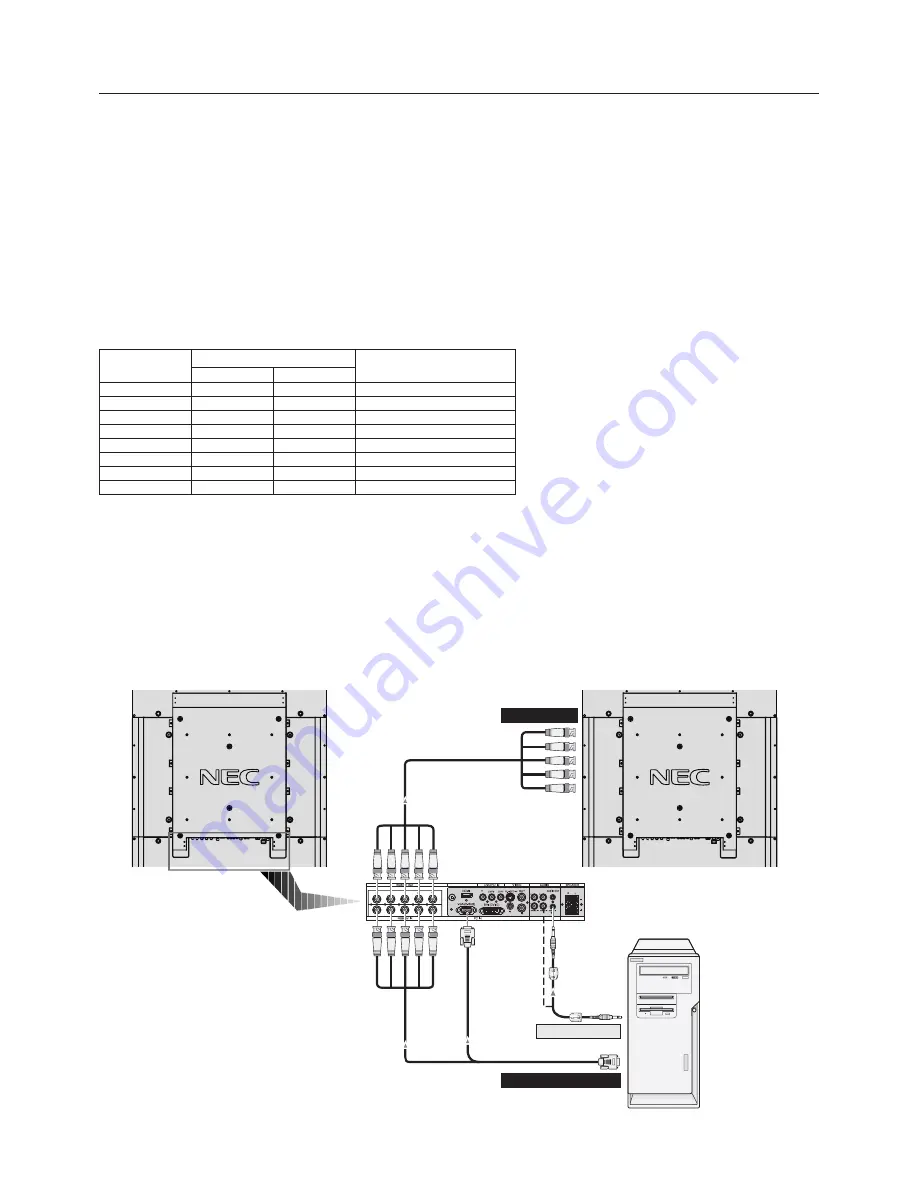
English-18
Connections
Before making connections:
*
First turn off the power of all the attached equipment and make connections.
*
Refer to the user manual included with each separate piece of equipment.
NOTE:
The LCD6520L and LCD6520P use the same input signal to display images.
When using LCD6520P, the displayed image is rotated 90 degrees.
Content for the LCD6520P should be prepared for use in portrait mode.
Connecting a Personal Computer
Connecting your computer to your LCD monitor will enable you to display your computer’s screen image.
Some video cards and a pixel clock over 162MHz may not display an image correctly.
Your LCD monitor displays proper image by adjusting the factory preset timing signal automatically.
<Factory preset signal timing>
Connect the LCD Monitor to a Personal Computer
•
To connect the VGA IN connector (mini D-sub 15 pin) on the LCD monitor, use the supplied PC - Video RGB signal cable
(mini D-sub 15 pin to mini D-sub 15 pin).
•
To connect the RGB/HV connector (BNC) on the LCD monitor, use a mini D-sub 15 pin to BNC x 5 signal cable (sold
separately). Select RGB/HV from the INPUT button.
•
When connecting one or more LCD monitors, use the RGB OUT connector (BNC) (BNC INPUT only).
•
AUDIO IN 1, 2 and 3 can be used for audio input. To select audio source [IN1], [IN2] or [IN3] press the AUDIO INPUT
button.
LCD monitor
LCD monitor (second monitor)
BNC x 5
BNC x 5
PC or IBM compatible
BNC x 5
Mini D-sub 15 pin
Mini D-sub
15 pin
To RGB/HV IN
To analog RGB output
To audio output
Horizontal
Vertical
640 x 480
31.5kHz
60Hz
800 x 600
37.9kHz
60Hz
1024 x 768
48.4kHz
60Hz
1280 x 768
48kHz
60Hz
1360 x 768
48kHz
60Hz
1280 x 1024
64kHz
60Hz
1600 x 1200
75kHz
60Hz
Compressed image
1920 x 1080
66.6kHz
60Hz
Recommended resolution
Resolution
Remarks
Scanning frequency
BNC INPUT only






























